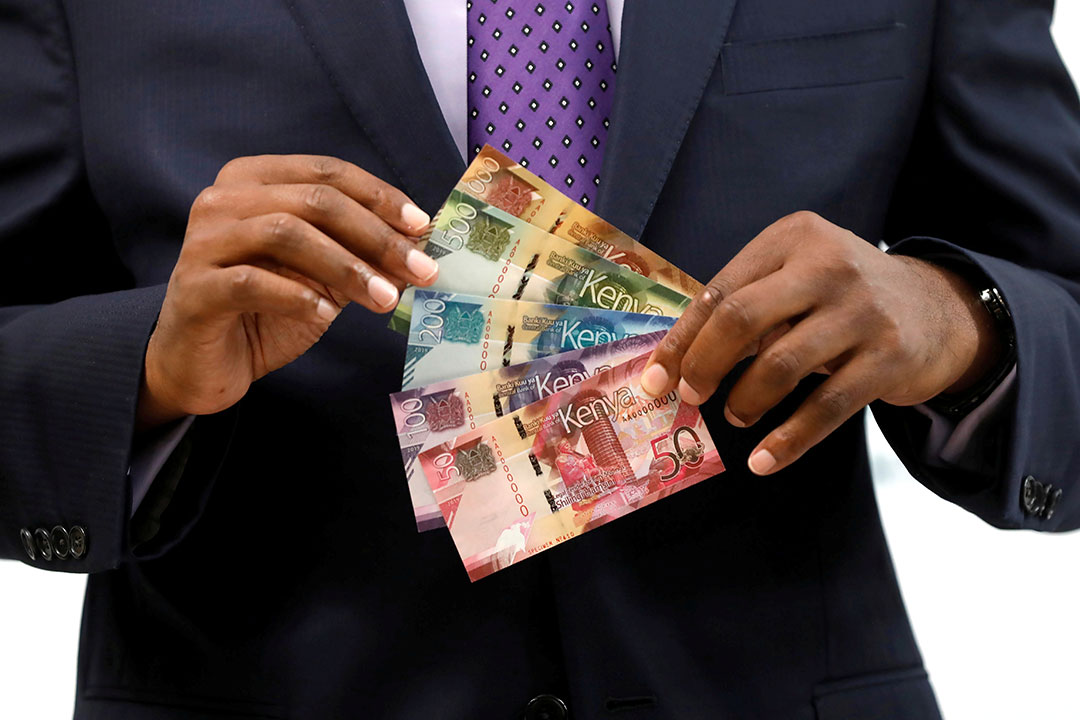Loan Conditions Tie African Borrowers’ Hands
ADF STAFF
Running from Mombasa to Nairobi, Kenya’s controversial Standard Gauge Railway (SGR) has come to represent everything that can go wrong with African nations’ complex and sometimes covert financial ties with China.
As African countries confront steep economic losses because of the COVID-19 pandemic, the overwhelming infrastructure debts they owe China have begun to choke their economies. High interest-rate loans, confidentiality agreements that thwart public transparency, and loans that Chinese authorities remain unwilling to reconfigure are some of the challenges African economic leaders now face.
As a result, countries find themselves pushed to the brink of default or, in some cases, beyond it. As countries struggle to keep up with their debt payments, they face the possibility that Chinese lenders will foreclose on railways, ports, bridges and other key pieces of infrastructure as they have elsewhere.
Kenya’s loans for the railway have made the state-run Kenya Railways Corp. the country’s most indebted institution. The declining value of the Kenyan shilling means the dollar-based loans get more expensive to repay every day.
An analysis of Kenya’s railway contract by the Katiba Institute revealed that a default on its SGR loan could result in Chinese authorities claiming the port, railway or other assets as collateral.
Further complicating matters for the SGR, a recent Court of Appeals ruling determined that the entire $3.6 billion undertaking — Kenya’s largest-ever infrastructure project — was illegal from the beginning because authorities did not entertain competing bids for the work.
Instead, Kenya signed a contract with the China Road and Bridges Corp., which also conducted the project’s feasibility study for free on the condition that it receive the contract, something critics point out was a huge conflict of interest. The government has declined to make that contract public.
“This was a public procurement that should have been subjected to a fair, competitive and transparent process,” Nelson Havi, president of the Law Society of Kenya, told KTN News. The Law Society challenged the railway’s legality in court.
The ruling raises questions about the legal status of the debt Kenya incurred as part of the project and the future operations of the railroad.
The Kenyan government put up 15% of the railway funding. The other 85% came from China’s Export Import Bank, one of three government-run institutions that China considered commercial banks. Together, they hold untold billions of dollars in debt across Africa, often charging interest rates much higher than government bonds. In many cases, the terms of those loans are kept secret as a condition of the contract, a factor that has made it difficult for countries such as Zambia to receive international debt relief.
At the time it started in 2014, the railway’s debt amounted to about 11% of Kenya’s government revenue. That increased when the project added another 120 kilometers and $1.5 billion to reach Naivasha, northwest of Nairobi, in 2015.
At the end of a five-year grace period, the annual debt payment doubled last year to $640 million and is set to jump again in 2021-22 to $1 billion. In 2020, Kenya’s debt, including its SGR loans, is forecast to consume nearly half the country’s revenue.
Supporters continue to say that the railway will pay for itself by moving freight to and from the port more quickly and for less than the existing truck network — a claim respected Kenyan economist David Ndii has repeatedly questioned.
“The railway has been sold as a commercially viable project, that is, it would pay for itself,” Ndii wrote in The Elephantin 2018. “I maintained that the railway could not pay, and that the debt would be paid from the public purse. This has now come to pass.”
The China Road and Bridges feasibility study claimed the railway would be profitable by moving 22 million tons of freight a year, or 20 trains a day every day — more than double the line’s actual operating capacity, according to a study by the Kenya Institute for Public Policy Research and Analysis.
Even before the COVID-19 pandemic suppressed global economic activity, the railway was operating about 65% lower than government expectations, with revenues of about $90 million and operating costs of $160 million. Earlier this year, Kenya defaulted on a $350 million payment to Africa Star, the CRBC subsidiary that runs the railway, raising the possibility that parts of the line might shut down.
With the railway running in the red, Kenya’s taxpayers are stuck with the bill for something that may never turn a profit, Havi said.
“This is a project where colossal sums of money are being invested,” Havi said. “These loans will be paid by Kenyans.”


Comments are closed.